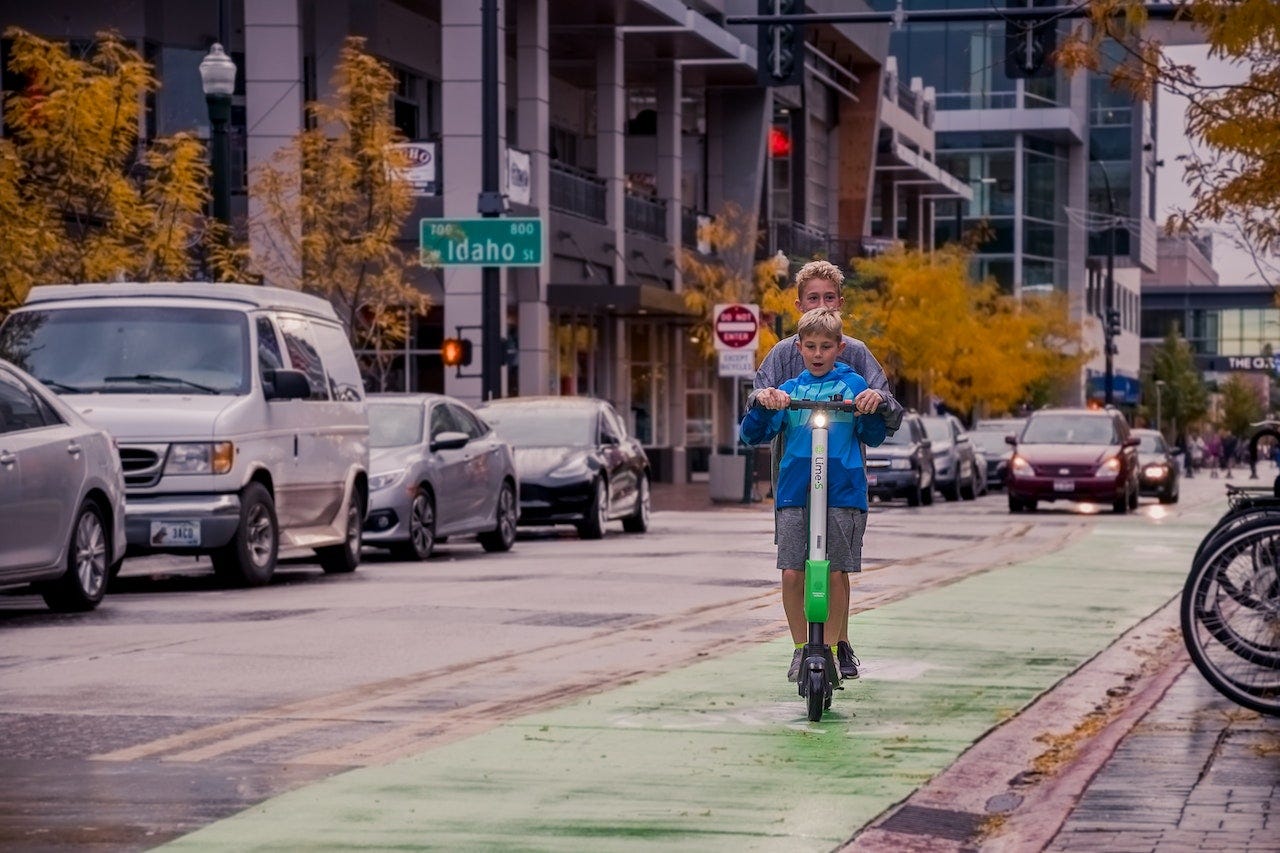Perceived danger can make you safer
Could it be that safety improvements are putting pedestrians, bicyclists, and motorists at higher risk?
Walk outside to the curb in front of your house. Imagine you’re on the diving board at the pool. Stand on the curb with your feet close together. Now lift up so you’re standing on your tippy toes. Stretch both arms forward toward the street. Now jump straight up and land back on the curb.
Now imagine the exact same exercise on the edge of the roof of a 5-story office building. None of us are going to do it. And not because jumping is silly, but because the consequence of a minor slipup is death. It’s not worth the risk.
Risk compensation is the term used to describe how humans adapt behavior according to the safety measures we think are in place. We do this all the time in ordinary life, usually without realizing the quick assessment our brain is performing.
Eating lobster. Am I allergic to shellfish?
Singing in the rain. Is anyone within earshot?
Swimming alone in the ocean. Can I see the shore?
Attempting a handstand. Am I in the grass or on a staircase?
Riding a scooter in the street. Is it a 6-lane arterial or skinny neighborhood street?
Driving a vehicle 60 mph. Am I on a highway or a beach?
Not every decision is about life and death, but the point is we compensate based on our perception of safety factors. Risk and safety mean different things to different people in different contexts. I’m far more confident on a bicycle than my mom. But my young niece also has a high level of confidence on her bicycle. When she had a helmet and training wheels, she thought she was invincible. You might say she gets a false sense of security.
Risk compensation gets complicated quickly because humans can be so irrational. It’s hard to pinpoint why we do the things we do. But we are certainly willing to try something “risky” if we feel like the worst thing that could happen isn’t all that bad (i.e. slipping off the curb as opposed to slipping off the roof of a building.)
Sam Peltzman is a retired economics professor from the University of Chicago. Almost 50 years ago, he published a report claiming the automobile safety features were offset by riskier behavior. Now known as the Peltzman Effect, here it is in the professor’s own words:
The main conclusion is that safety regulation has had no effect on the highway death toll. There is some evidence that regulation may have increased the share of this toll borne by pedestrians and increased the total number of accidents. —Sam Peltzman, The Effects of Auto Safety Regulation
The Peltzman Effect is a reminder that urbanists can never lose sight of street design’s role in public safety.
Why do the Danes feel so casual using bicycles as transportation? Because they aren’t riding along the edge of a rooftop like we Americans are. Infrastructure is everything.
Americans have been trained to expect hostile environments for skateboarding, scootering, or bicycling. At the same time, Americans have been trained to expect the most pleasant environment inside a personal vehicle. Comfortable seating, climate controlled, shielded from outside sounds and elements. Driving in modern times feels so safe and comfortable, that we compensate by doing things that motorists 100 years ago wouldn’t dream of.
Can you imagine a man-on-the-street interview in 1922? “Good morning, sir. I was wondering if you could tell me how often you eat a freshly prepared meal while operating this jalopy. Oh, never? What about trimming your beard?”
Look, I’m not excusing reckless driving. We’re each responsible for our own behavior. AND, there are indisputable factors that influence our behavior operating motor vehicles. Peltzman wasn’t arguing that regulations are bad just because the government has no business telling companies how to make their products. He was asking the questions any road safety advocate should be asking.
Why aren’t traffic deaths going down?
We are drivers hitting more pedestrians?
Why can’t drivers hear the emergency vehicles?
Are there negative trade-offs associated with effortless steering?
Do shock absorbers make drivers feel more comfortable speeding on rough surfaces?
And on and on and on.
People feel safe, and the feeling of safety allowed danger to reemerge, often hidden from view. —Greg Ip, FOOLPROOF: Why Safety Can Be Dangerous and How Danger Makes Us Safe
This concept of danger making us feel safe is part of what makes shared space projects successful. Subtle design elements make driving allowable but a little uncomfortable. Drivers lean forward, look this way and that, and proceed slowly. Watch videos of shared streets examples here and here. And watch this short lecture by one of my mentors, Ben Hamilton-Baillie, here.
So what do you do with this complicated psychological issue?
I understand the urge to demand automakers install stronger glass, more airbags, rearview cameras, and vehicle detection alarms. All this stuff seems to make us feel safer. I’m not convinced it makes us better drivers. I was stunned the first time I realized my older son couldn’t parallel park without a rearview camera. He zipped in effortlessly with the screen telling him exactly how to maneuver between cars and curb. When I had him try in my car without a camera, it was laborious. Which is fine!
Anyway, humans adapt. I’m suggesting you keep the Peltzman Effect in mind as a reason streets should be designed to be uncomfortable for speeding, uncomfortable for distracted driving, and almost inexplicably pleasant for hopping on a skateboard, scooter, or bike.



